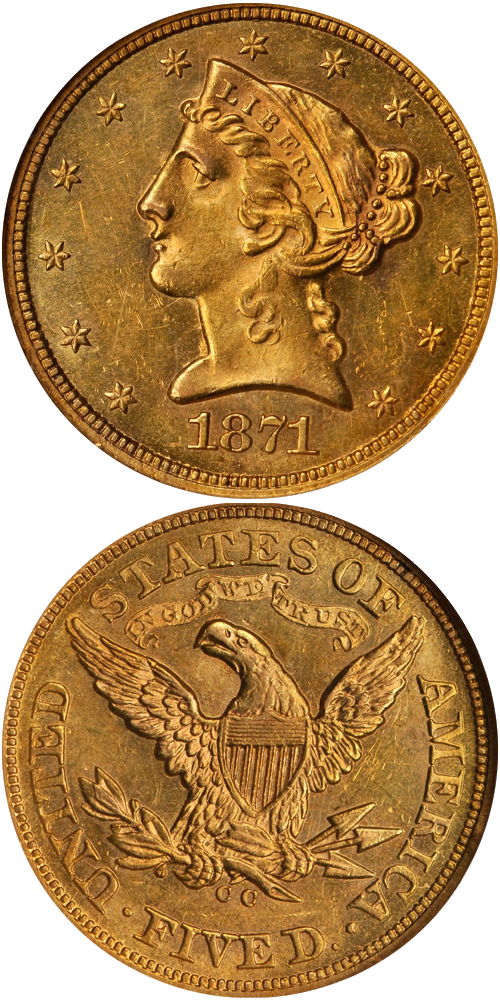1871-CC Liberty Head Half Eagle
Jeff Ambio: The two known die marriages of the 1871-CC half eagle share the same obverse die, identifiable by the downward slope of the date with the digits 71 very close at their tops.
Rusty Goe: After one year in business, and with a new superintendent, Henry F. Rice, who had replaced Abraham Curry in the last few months of 1870, the Carson Mint had aroused much curiosity in the minds of locals. They longed for a greater understanding of what went on inside the building. On December 30, 1870, Carson City's Daily State Register (which for two years replaced the Carson Appeal) published an overview of how everything worked at the mint stating it would "lay before our readers a full description of the coin manufactory in our midst." The article went on to give thorough details on how raw bullion was transformed into bars, strips, blanks and finally coins.
In January 1871, Coiner Granville Hosmer delivered 6,100 half eagles. In the second half of the year, Hosmer struck 14,670 half eagles, bringing 1871's total to 20,770. This would be the highest output for that denomination in the Carson Mint's first four years, and the second highest through the decade of the 1870s.
The example offered here in the Battle Born collection is the finest known survivor from that second year of issue.
Q. David Bowers: Rusty Goe estimates 160 to 185 1871-CC half eagles survive, with three or four Uncirculated. His figures are a bit more liberal than my guess of two or three Mint State and 80 to 120 in lesser grades. By any accounting high-grade examples are, as New Netherlands Coin Company catalogs used to say, RRR. In 1979 David W. Akers weighed in with "I have seen only two examples that I considered to be Uncirculated."
The example to the left was sold by Stack's Bowers Galleries in the August 2012 Battle Born Collection of Carson City Coinage, where it realized $64,625.






